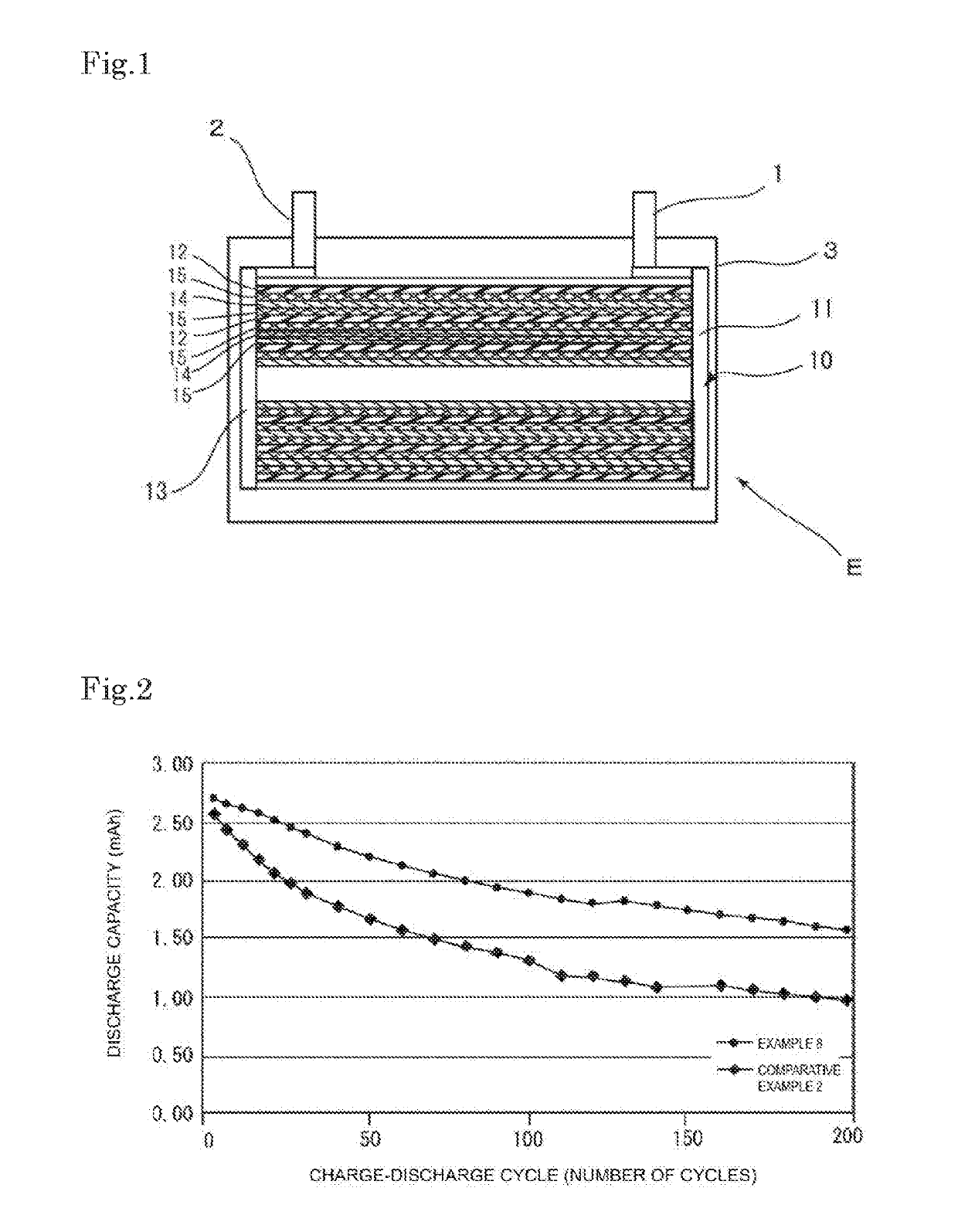Lithium ion battery
a technology of lithium ion batteries and negative electrodes, applied in the direction of sustainable manufacturing/processing, cell components, climate sustainability, etc., can solve the problems of reducing battery life, lowering battery capacity, deteriorating negative electrodes as well, etc., to reduce battery capacity, reduce battery life, and suppress the effect of deterioration of negative electrodes
- Summary
- Abstract
- Description
- Claims
- Application Information
AI Technical Summary
Benefits of technology
Problems solved by technology
Method used
Image
Examples
examples
[0042]The present invention shall be described in more detail on the basis of the following specific examples, but the present invention is not limited to the following examples.
[Confirmation Test 1 of Transition Metal Ion Removal Effect]
examples 1 to 3
[0043]In 500 of pure water, 2 g of nickel chloride (NiCl2) was dissolved and diluted 100 times, and a reference solution having a nickel ion concentration of about 10 mg / L was prepared. The aqueous solution in an amount of 50 mL was taken in a beaker and each of 0.01 g, 0.1 g and 1.0 g of A-type zeolite exchanged with Ca as a metal ion removal agent was added to the aqueous solution, and was allowed to stand for 12 hours. The nickel ion concentration of each of the aqueous solutions was then measured. The results are shown in Table 1. Moreover, the nickel ion concentration after allowing the reference solution to stand for 12 hours as a blank value is also shown in Table 1.
TABLE 1Amount of Metal IonNi2+Removal Agent AddedConcentrationExample No.( / 50 mL)(mg / L)Blank—9.32Example 10.01g5.12Example 20.1g0Example 31.0g0
[0044]As it is obvious from Table 1, the A-type zeolite exchanged with Ca is found to have an adsorption capability of nickel ions.
[Confirmation Test 2 of Transition Metal ...
examples 4 to 6
[0045]In 500 mL of pure water, 2 g of nickel chloride hexahydrate (NiCl2.6H2O) was dissolved and diluted 100 times, and a reference solution having a nickel ion concentration of about 10 mg / L (reference solution I) was prepared. Moreover, 0.4 g of cobalt chloride hexahydrate (CoCl2.6H2O) was dissolved in 200 mL of pure water and diluted 50 times, and a reference solution having a cobalt ion concentration of about 10 mg / L (reference solution II) was prepared. Furthermore, 0.36 g of manganese chloride tetrahydrate (MnCl2.4H2O) was dissolved in 200 mL of pure water and diluted 50 times, and a reference solution having a manganese ion concentration of about 10 mg / L (reference solution III) was prepared.
[0046]Each of these reference solutions I, II and III in an amount of 50 mL was taken in a beaker, and each of 0.01 g, 0.1 g and 0.2 g of porous carbon materials (EPSIGUARD KC-601P, manufactured by Kurita Mater Industries Ltd., average particle size of 2.5 μm) as a metal ion removal agent...
PUM
| Property | Measurement | Unit |
|---|---|---|
| thickness | aaaaa | aaaaa |
| thickness | aaaaa | aaaaa |
| specific surface area | aaaaa | aaaaa |
Abstract
Description
Claims
Application Information
 Login to View More
Login to View More - R&D
- Intellectual Property
- Life Sciences
- Materials
- Tech Scout
- Unparalleled Data Quality
- Higher Quality Content
- 60% Fewer Hallucinations
Browse by: Latest US Patents, China's latest patents, Technical Efficacy Thesaurus, Application Domain, Technology Topic, Popular Technical Reports.
© 2025 PatSnap. All rights reserved.Legal|Privacy policy|Modern Slavery Act Transparency Statement|Sitemap|About US| Contact US: help@patsnap.com

